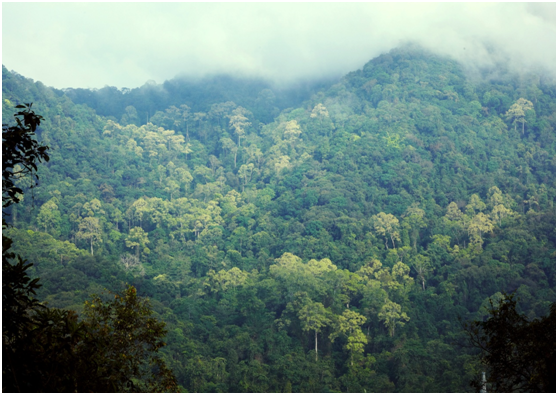In a study published in New Phytologist, researchers from Xishuangbanna Tropical Botanical Garden (XTBG) of the Chinese Academy of Sciences and their collaborators provided insight to the intricate mechanisms shaping chemical diversity in tropical forests, emphasizing the critical role of intraspecific variation in plant metabolites. They presented the first metabolomic study of genetic and environmental drivers of intraspecific metabolite variation in tree species co-occurring within a tropical forest community.
Plant leaves harbor tens of thousands of metabolic molecules, collectively referred to as the "metabolome." These compounds are not only the plant's "survival toolkit" for coping with environmental stresses such as high temperatures and droughts, but also their "chemical language" for interacting with the external environment.
The researchers analyzed 300 individuals from 10 dominant tree species in a 20-hectare forest dynamics plot in Xishuangbanna. They employed untargeted metabolomics (high-resolution mass spectrometry) to quantify and classify over thousands of foliar metabolites, and used restriction-site associated DNA (RAD) sequencing to assess genetic distances among individuals. Additionally, they utilized field measurements of soil properties, light availability, herbivory damage, and neighborhood crowding to evaluate biotic and abiotic influences.
They found that intraspecific differences among individual trees contributed more to overall community-level metabolite diversity than variation between species. Biological factors (such as neighbor effects, herbivory pressure) played a dominant role in regulating total metabolites and secondary metabolites, while abiotic environments (such as light, soil, etc.) strongly drive the variation in primary metabolites (such as carbohydrates).
There were significant differences in the relative importance of these driving factors among different biosynthetic pathways and species. Biological factors (such as neighbor effects, herbivory pressure) played a dominant role in regulating total metabolites and secondary metabolites, while abiotic environments (such as soil nutrients, light availability etc.) strongly drove the variation in primary metabolites (such as carbohydrates).
The study revealed the central role of intraspecific variation in maintaining the metabolic diversity of tropical forest tree species. It indicated that species relied on specific metabolite categories to adapt to environmental pressures, and genetic, abiotic, and biotic factors jointly drove intraspecific variation through pathway-specific mechanisms.
“Genetic diversity as well as complex interactions between the environment and organisms should be taken into account, when studying plant adaptation to the environment,” said YANG Jie of XTBG.

20-ha forest plot in Xishuangbanna. (Image by MO Xiaoxue)
Published: 18 April 2025

